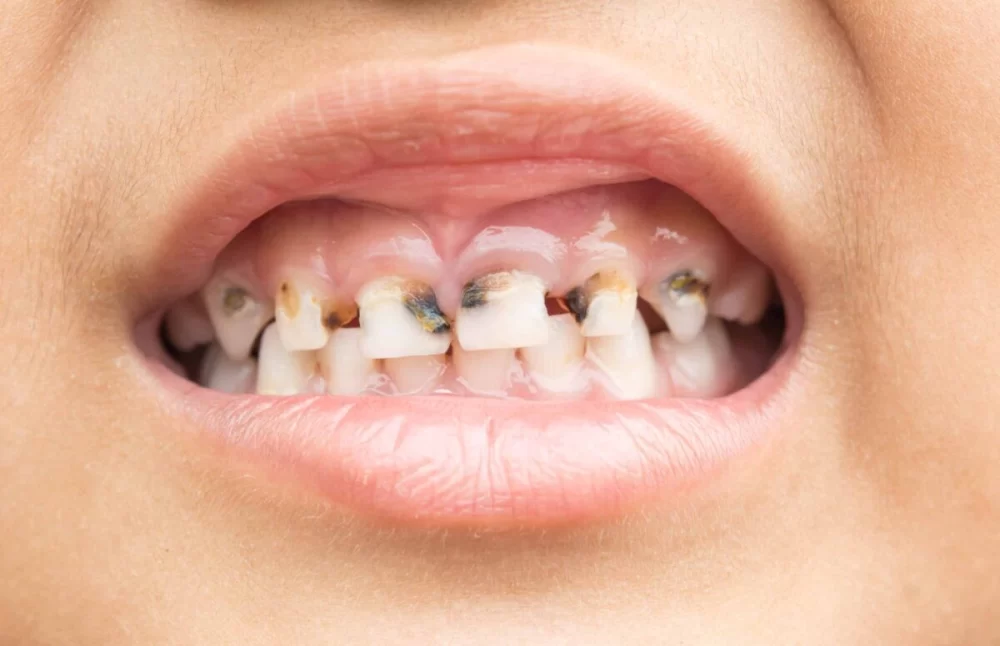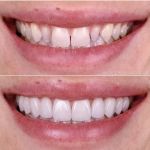
- Understanding Tooth Decay in Baby Teeth
- Why Treatment of Tooth Decay in Primary Teeth Is Important
- Methods to Treat Tooth Decay in Baby Teeth
- Real-Life Stories Highlighting the Importance of Early Treatment
- Preventive Care and Maintenance for Healthy Baby Teeth
- Recommended Products for Baby Teeth Care from Dentistry Toothtruth
Understanding Tooth Decay in Baby Teeth
Tooth decay in baby teeth, also known as early childhood caries, is a common dental issue affecting many children worldwide. Despite being temporary, baby teeth play a crucial role in a child’s development, including chewing, speaking, and guiding permanent teeth into proper position. Recognizing how tooth decay develops in these primary teeth helps parents grasp the urgency and methods of treatment.
How Decay Develops in Baby Teeth
Decay begins when sugars and starches from food interact with bacteria in the mouth, producing acids that attack tooth enamel. Baby teeth have thinner enamel compared to adult teeth, making them more vulnerable to rapid decay progression. Early signs include white spots, sensitivity, and visible cavities.
Differences Between Baby Teeth and Permanent Teeth Decay
Decay in baby teeth can progress faster and affect the underlying dental pulp sooner. This means untreated decay can lead to pain, infection, and issues with the development of permanent teeth.
Why Treatment of Tooth Decay in Primary Teeth Is Important
Many parents mistakenly believe baby teeth are less important because they will fall out. However, treating tooth decay in baby teeth is essential to avoid complications that can impact a child’s overall health and smile.
Prevents Pain and Infection
Untreated cavities can cause severe discomfort and lead to infections that may require more invasive treatments or antibiotics.
Supports Proper Speech and Eating
Healthy baby teeth ensure children can chew food effectively and develop clear speech patterns.
Guides Permanent Teeth Growth
Baby teeth act as placeholders, and premature loss due to decay can cause misalignment or crowding of adult teeth.
Methods to Treat Tooth Decay in Baby Teeth
Knowing how to treat tooth decay in baby teeth involves understanding the available dental treatments and home care strategies. Each case requires a tailored approach depending on the severity of decay.
1. Professional Dental Treatments
For mild decay, dentists often recommend fluoride varnishes or dental sealants that strengthen enamel and prevent further decay. In more advanced cases, fillings or crowns may be necessary to restore tooth function and structure. In rare severe cases, tooth extraction might be considered, followed by space maintainers to protect alignment.
2. Home Care and Monitoring
Parents should maintain rigorous oral hygiene routines for their children, including brushing twice daily with appropriate fluoride toothpaste and flossing. Limiting sugary snacks and encouraging a balanced diet supports treatment success.
3. Regular Dental Visits
Frequent check-ups allow early detection and timely intervention, reducing the risk of serious decay.
Real-Life Stories Highlighting the Importance of Early Treatment
Consider the case of little Emma, whose parents noticed white spots on her front teeth. Prompt dental treatment including fluoride varnish and improved home care prevented cavity progression, saving her from pain and more complex procedures. Emma’s story illustrates how early attention makes a significant difference.
Conversely, a story shared by a parent on a parenting forum revealed their child suffered severe toothache due to untreated cavities in baby teeth. This resulted in emergency dental visits and extensive treatment, underscoring the risks of delay.
Preventive Care and Maintenance for Healthy Baby Teeth
Prevention remains the cornerstone of managing tooth decay in baby teeth. Parents can take active steps to protect their child’s oral health:
Healthy Feeding Practices
Avoid putting babies to bed with bottles containing sugary liquids. Encourage water and healthy snacks.
Consistent Oral Hygiene
Clean gums from infancy and brush teeth as soon as they erupt with child-friendly brushes and fluoride toothpaste.
Fluoride Use and Sealants
Discuss with your dentist about fluoride treatments and sealants that add an extra layer of protection.
Recommended Products for Baby Teeth Care from Dentistry Toothtruth
For parents seeking the best products to support treatment and prevention of tooth decay in baby teeth, Dentistry Toothtruth offers a curated selection of safe and effective dental care items. From gentle fluoride toothpastes designed for young children to fun and ergonomic toothbrushes, their range helps make oral care easier and more enjoyable for kids.
Combining expert dental advice, timely treatment, and quality products ensures your child’s smile stays healthy and bright through their early years and beyond.







 Amara Dental of Cherry Hill4.0 (311 review)
Amara Dental of Cherry Hill4.0 (311 review) Leonard I Nunnally III DDS4.0 (107 review)
Leonard I Nunnally III DDS4.0 (107 review) Lake Minnetonka Orthodontics4.0 (40 review)
Lake Minnetonka Orthodontics4.0 (40 review) Dr. Yung T. Lang, DDS4.0 (6 review)
Dr. Yung T. Lang, DDS4.0 (6 review) Lourdes's Dentistry - Affordable Dentist4.0 (160 review)
Lourdes's Dentistry - Affordable Dentist4.0 (160 review) Fletcher Heights Dental Care, PC4.0 (55 review)
Fletcher Heights Dental Care, PC4.0 (55 review) The Importance of Oral Health Education During Pregnancy for a Healthy Pregnancy
The Importance of Oral Health Education During Pregnancy for a Healthy Pregnancy Best Tips for Brushing Your Teeth Properly for Healthy Gums: Essential Techniques for Oral Health
Best Tips for Brushing Your Teeth Properly for Healthy Gums: Essential Techniques for Oral Health Why Skipping Dental Checkups Can Lead to Bigger Oral Health Problems
Why Skipping Dental Checkups Can Lead to Bigger Oral Health Problems Advantages of Porcelain Dental Restorations
Advantages of Porcelain Dental Restorations How Can Diabetes Cause Tooth and Gum Problems? Preventing and Managing Oral Health Issues
How Can Diabetes Cause Tooth and Gum Problems? Preventing and Managing Oral Health Issues Healthy Habits for Promoting Good Oral Health and Hygiene: Tips for a Healthy Smile
Healthy Habits for Promoting Good Oral Health and Hygiene: Tips for a Healthy Smile